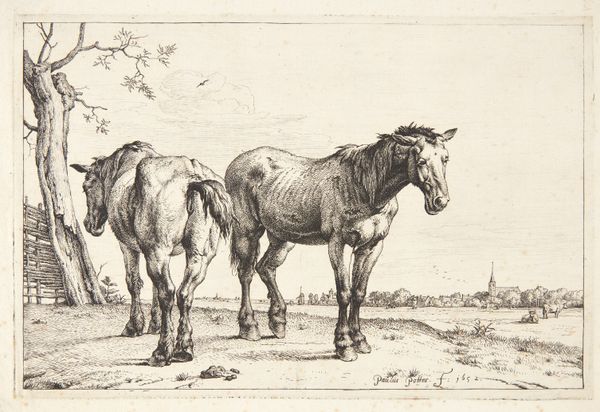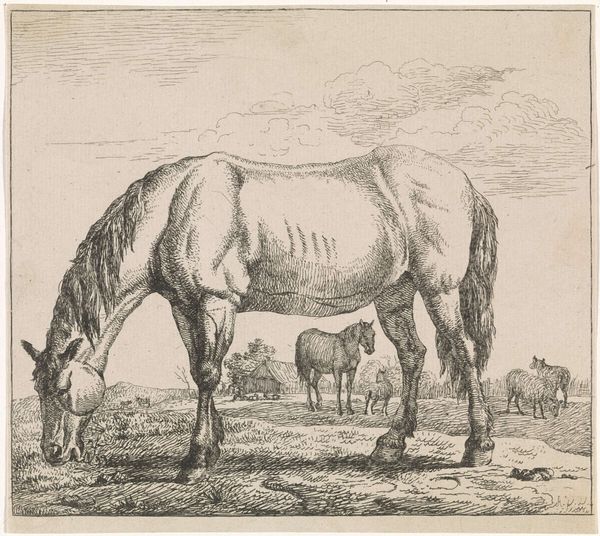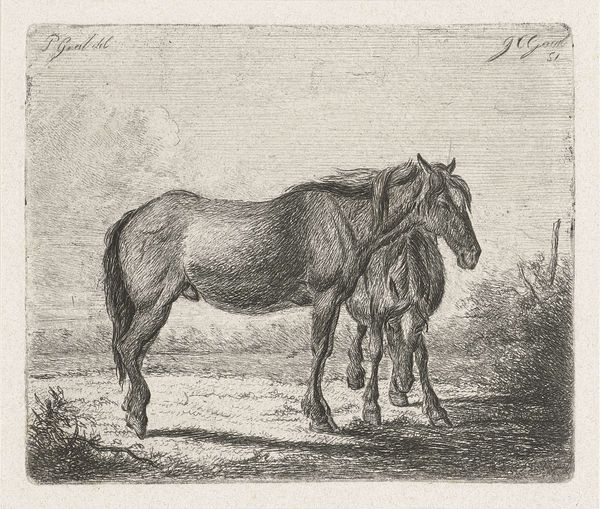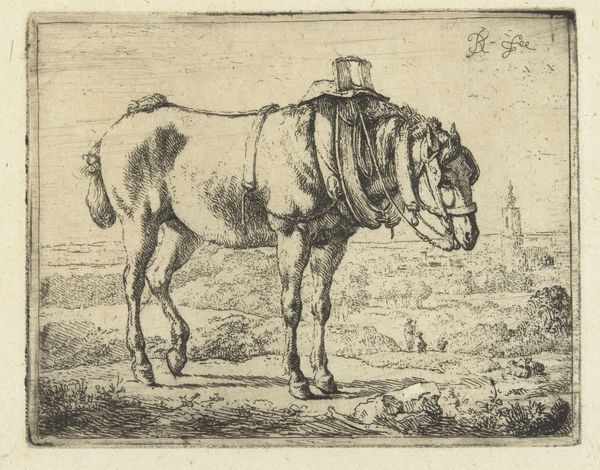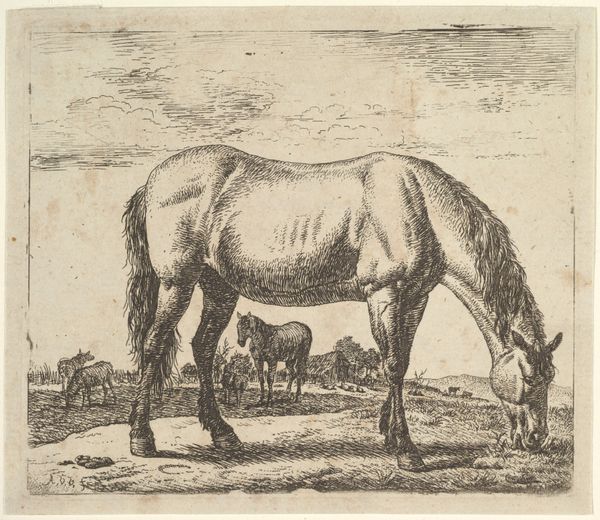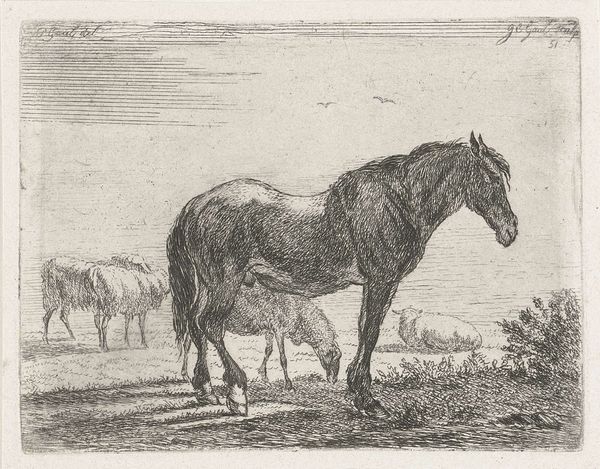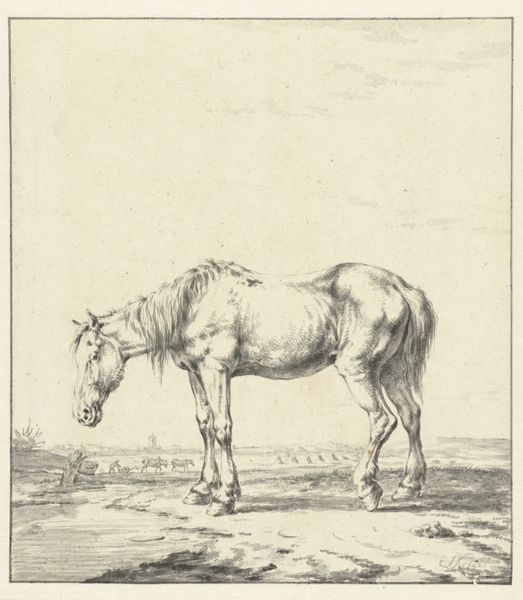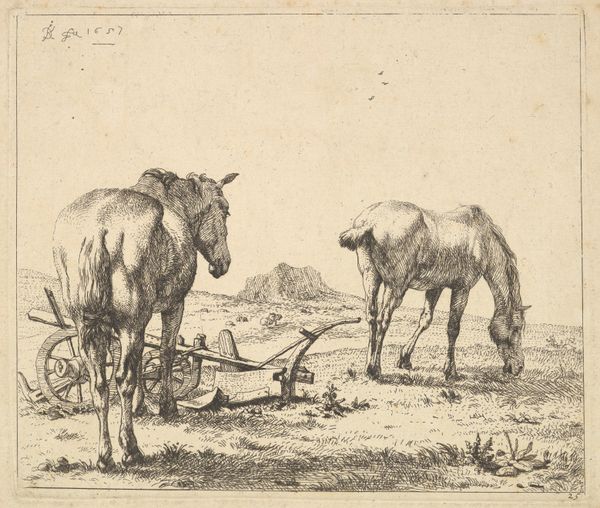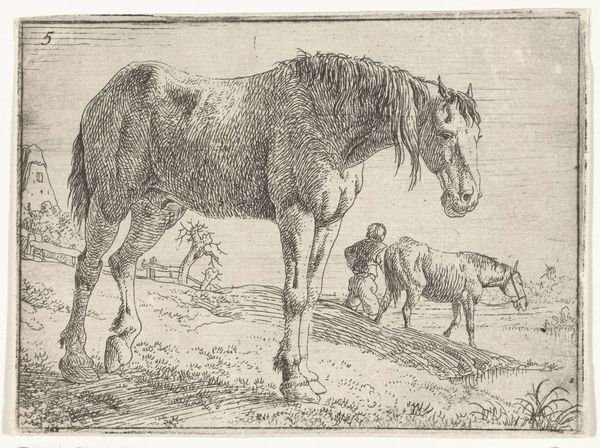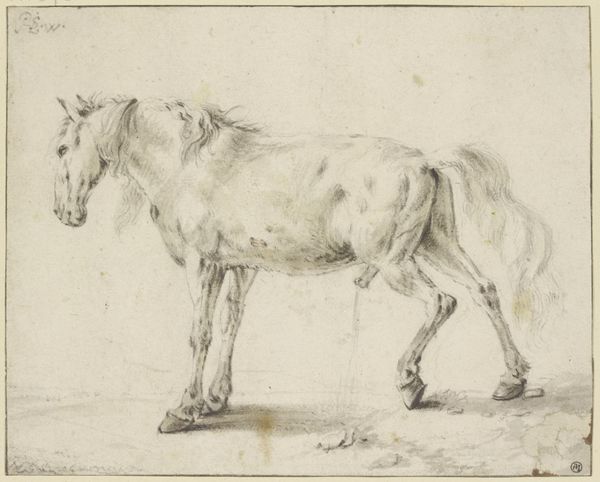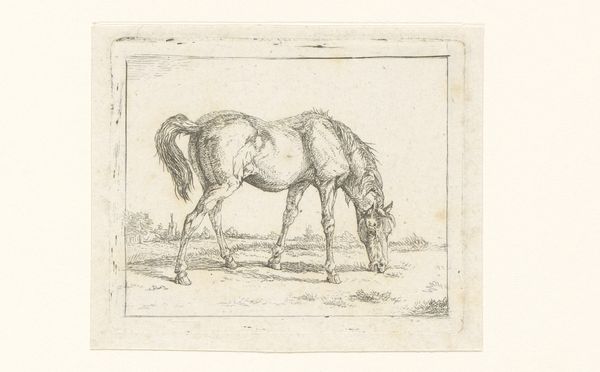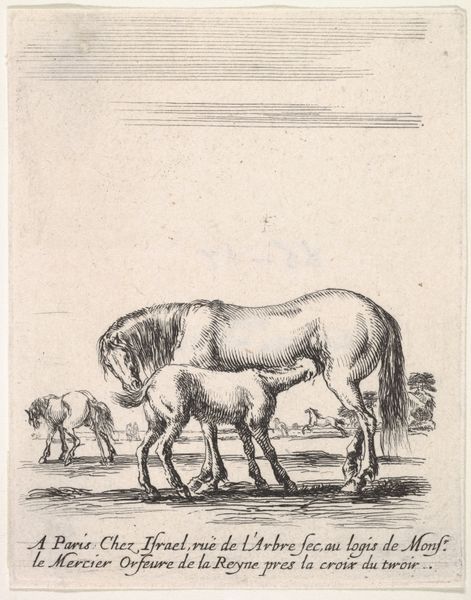
drawing, print, ink, engraving
#
drawing
#
baroque
#
animal
#
dutch-golden-age
# print
#
landscape
#
figuration
#
ink
#
horse
#
genre-painting
#
engraving
#
realism
Dimensions: height 142 mm, width 216 mm
Copyright: Rijks Museum: Open Domain
Editor: This drawing, "Twee ploegpaarden" or "Two Plough Horses," likely from the late 17th century, captures these animals in surprising detail using ink and engraving. There's a real starkness to the scene; the horses seem weary. What do you read in this piece, what strikes you most? Curator: Oh, absolutely. It's as though we’ve stumbled upon a quiet moment snatched from a larger narrative, right? I mean, the realism practically vibrates off the page. Dutch Golden Age artists, especially those diving into genre scenes and landscapes, had this knack for turning the everyday into something profound. Editor: It’s almost melancholic though, wouldn’t you say? Curator: Perhaps, or maybe it’s just honest. Life for working animals wasn't easy then. These aren't majestic warhorses; they're farmhands. Note how the artist’s used line to delineate the landscape versus musculature of the horses, lending a unique mood and purpose to each. Are they resting, perhaps contemplating a change in profession? Probably just tired, yes? Ha! Editor: Ha! I guess that makes more sense than career changes! So, you see the artist celebrating this kind of everyday life, even its harder edges? Curator: Precisely. This piece offers a look at the world as it was. Also, consider the act of observing, too – to be captured, even horses deserve immortality, yes? What did *we* really learn about these creatures? Editor: It is really cool to think about it from their perspective... and the immortality point! Very cool indeed.
Comments
No comments
Be the first to comment and join the conversation on the ultimate creative platform.
